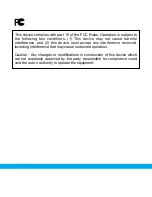
ICI2 Page 14
PROGRAMMING YOUR ICI2
Now that we have made it through the initial ‘turn on’ steps, it is time to
program the microcontroller for your individual codes. Remember to install
some fresh batteries in your remote control and aim the infrared LED towards
the photo sensor. Depress one of the buttons that you intend to use for
operation (I.e. button #1 for the first relay). The LED should begin to blink as
the unit receives the infrared code from the transmitter. This testing verifies
the operation of the detector and associated circuitry. It will also provide some
clues to the operation of the remote control unit (remember we talked about
this in the theory of operation) as you may see a long “burst” of code followed
by successive shorter pulse trains, or you may see the pulse train being
repeated over and over. If you have access to an oscilloscope you can even
observe this pulse train on the detector “output “pin, which is tied to pins 1 and
19 of the microcontroller.
Now we will set our controller to the “learn” mode to memorize the pulse
trains from our remote, and configure the jumpers to learn four codes as we
move along.
Depress and hold the “learn” button.
Now the unit is waiting to memorize the code for your remote. Depress the
button on your remote control unit and the LED on the front panel will blink.
The speaker will chirp when the code is learned. Just to be safe, push the but-
ton on your remote control unit twice to ensure that the micro has memorized
your remote control’s pulse train.
Uh-oh… a rasberry!
If upon initial programming your speaker emits a two tone “rasberry”, don’t
fret! This simply means that your remote control is transmitting data at a
slower rate than expected by the current jumper settings. If this is the case,
install the jumper across the “speed” terminals on the circuit board. This will
allow the unit to work at the slower pulse train rate just as effectively as the
faster rate.
Back to programming. Now that the first, or digital 0,0, location has been
programmed it is time to advance to the next three states. We will need to
count in binary, or base two. There is no such thing as a number two in binary,
only ones and zero’s (making it the choice of electronic circuits). The following
chart will describe the header jumper sequence for the binary count, and we
have left some room to jot down the function key you are using on your re-
mote. Be careful when programming to use the SEL 0 and SEL 1 jumpers in
the correct order, as the order of 1’s and 0’s are important when identifying the
buttons.
Summary of Contents for ICI2
Page 16: ...ICI2 Page 16 ICI2 BOARD LAYOUT...
Page 18: ...ICI2 Page 18...






































